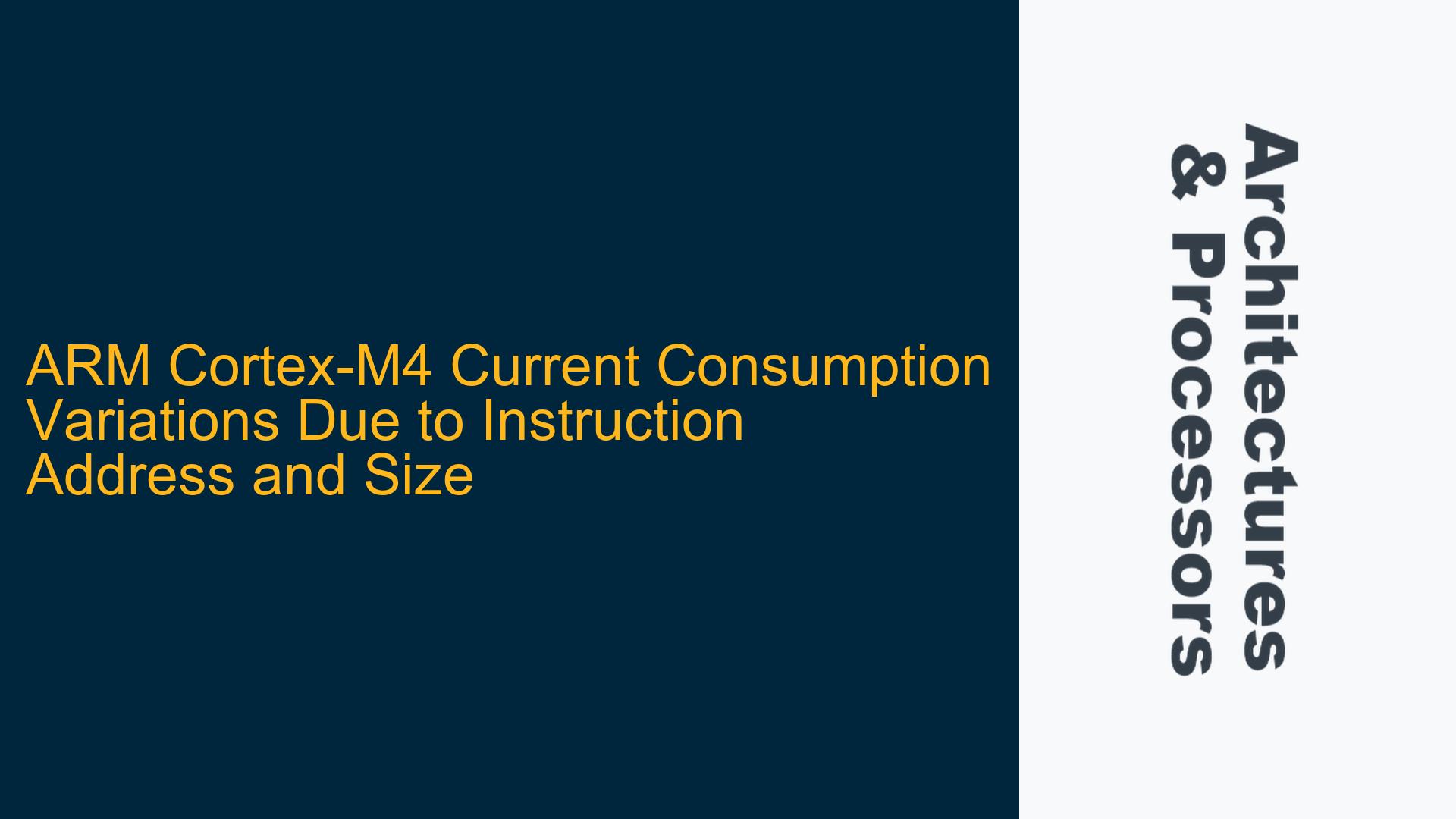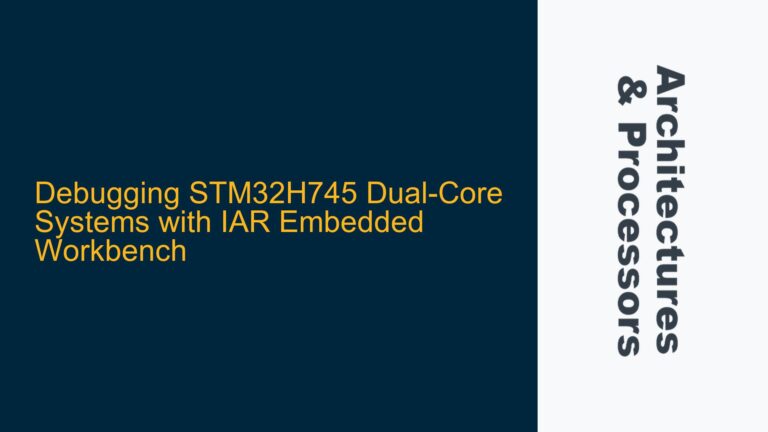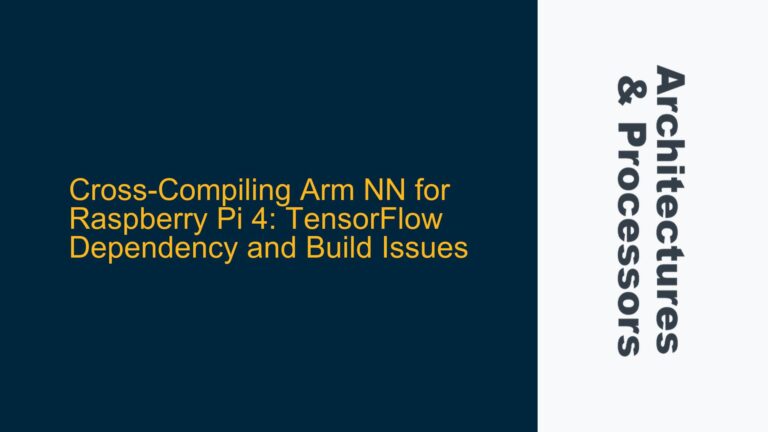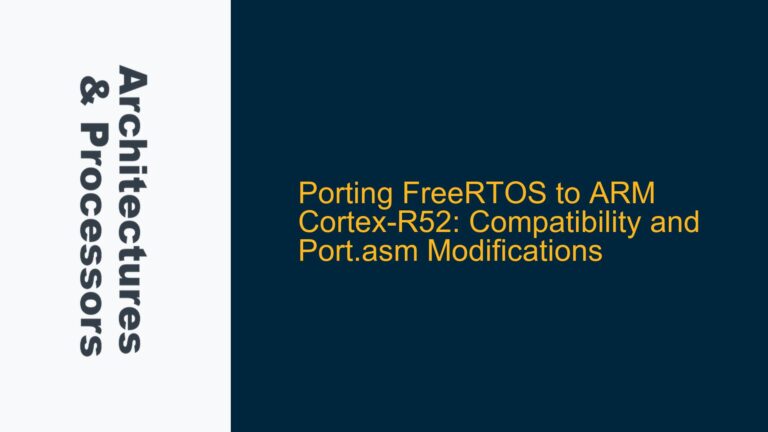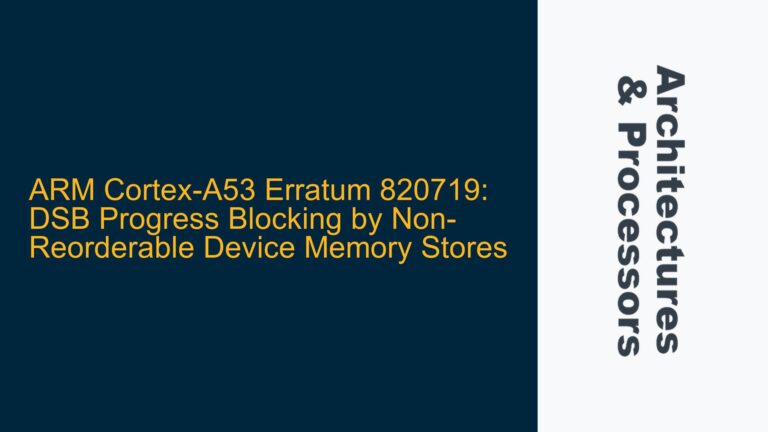ARM Cortex-M4 Pipeline Behavior and Instruction Fetch Energy Impact
The ARM Cortex-M4 processor, a widely used embedded microcontroller core, exhibits variations in current consumption based on the size and alignment of instructions being executed. This behavior is primarily influenced by the interaction between the processor’s pipeline, instruction fetch mechanism, and memory subsystem. The Cortex-M4 employs a 3-stage pipeline (Fetch, Decode, Execute) and uses a 32-bit AHB-Lite bus for instruction fetches from code memory space (0x00000000 to 0x1FFFFFFC).
When examining energy consumption patterns, two distinct scenarios emerge based on instruction size:
32-bit Instruction Execution:
The processor fetches one 32-bit instruction per memory access, utilizing all four byte lanes of the memory interface. This results in a consistent energy consumption pattern as the memory subsystem activates all byte lanes uniformly for each fetch operation. The instruction address increments by 4 bytes for each subsequent instruction, maintaining alignment with the 32-bit memory interface.
16-bit Instruction Execution:
With Thumb-2 instructions, the processor can fetch two 16-bit instructions in a single 32-bit memory access when properly aligned. This reduces the number of memory fetch operations required for the same number of instructions, potentially lowering energy consumption. However, the energy profile becomes more complex due to variations in memory access patterns and potential misalignment scenarios.
The memory subsystem’s behavior significantly impacts energy consumption. In little-endian mode, memory is organized as follows:
Byte[0xB], Byte[0xA], Byte[9], Byte[8]
Byte[7], Byte[6], Byte[5], Byte[4]
Byte[3], Byte[2], Byte[1], Byte[0]
For 32-bit instructions, all four byte lanes are activated simultaneously, resulting in consistent energy consumption per fetch. For 16-bit instructions, only two byte lanes are activated per instruction, but the specific lanes used depend on the instruction’s alignment within the memory word.
Memory Subsystem Activation Patterns and Instruction Alignment Effects
The variation in current consumption observed in the Cortex-M4 processor stems from several interrelated factors in the memory subsystem and instruction processing pipeline:
Memory Interface Activation:
The 32-bit AHB-Lite memory interface activates different numbers of byte lanes based on instruction size and alignment. For 32-bit instructions, all four byte lanes are activated simultaneously, while 16-bit instructions only activate two byte lanes. This difference in memory subsystem activation directly impacts energy consumption.
Instruction Fetch Efficiency:
When executing 16-bit Thumb-2 instructions, the processor can fetch two instructions in a single memory access if they are properly aligned. This improves fetch efficiency but creates a more complex energy profile due to variations in memory access patterns. The energy consumption per instruction decreases, but the pattern becomes less predictable due to alignment considerations.
Pipeline Effects:
The Cortex-M4’s 3-stage pipeline interacts differently with 16-bit and 32-bit instructions. The fetch stage must handle varying instruction sizes, which affects how instructions flow through the pipeline and how often the memory interface is accessed. This pipeline behavior contributes to the observed energy consumption patterns.
Memory Access Patterns:
The alignment of instructions in memory affects how the memory subsystem is accessed. When 16-bit instructions are properly aligned, two instructions can be fetched in a single memory access. However, misaligned instructions may require additional memory accesses, increasing energy consumption. The processor’s handling of instruction alignment contributes to the observed variations in current consumption.
Cache Effects:
While the Cortex-M4 typically doesn’t include instruction cache, the memory subsystem’s behavior still affects energy consumption. The activation of different numbers of byte lanes and the frequency of memory accesses directly impact the energy profile of instruction execution.
Optimizing Instruction Fetch Patterns for Energy Efficiency
To address the observed variations in current consumption and optimize energy efficiency in ARM Cortex-M4 systems, several strategies can be employed:
Instruction Alignment Optimization:
Ensure proper alignment of 16-bit Thumb-2 instructions to maximize fetch efficiency. When two 16-bit instructions are properly aligned within a single 32-bit memory word, the processor can fetch both instructions in a single memory access, reducing energy consumption.
Memory Access Pattern Analysis:
Analyze and optimize memory access patterns to minimize the number of memory fetch operations. Grouping frequently executed instructions together and ensuring proper alignment can reduce the energy overhead of instruction fetching.
Pipeline Utilization:
Optimize instruction sequences to maximize pipeline utilization while minimizing energy consumption. Consider the trade-offs between instruction density and energy efficiency when choosing between 16-bit and 32-bit instructions.
Memory Subsystem Configuration:
Configure the memory subsystem to optimize energy consumption based on the instruction mix. This may include adjusting memory timing parameters or implementing power-saving modes when appropriate.
Energy Profiling:
Implement detailed energy profiling to understand the specific energy consumption patterns of different instruction sequences. Use this information to guide optimization efforts and validate the effectiveness of energy-saving strategies.
Code Density Considerations:
Balance code density with energy efficiency. While 16-bit Thumb-2 instructions generally provide better code density and potentially lower energy consumption, there may be cases where 32-bit instructions offer better overall energy efficiency due to reduced memory access frequency.
Instruction Mix Optimization:
Analyze the mix of 16-bit and 32-bit instructions in critical code paths. Optimize the instruction mix to minimize energy consumption while maintaining performance requirements. Consider using compiler optimizations that take energy consumption into account.
Memory Interface Configuration:
Configure the memory interface to optimize energy consumption based on the specific instruction patterns of the application. This may include adjusting bus widths, timing parameters, or implementing power-saving features when appropriate.
By understanding and addressing these factors, developers can optimize the energy efficiency of ARM Cortex-M4 based systems while maintaining performance requirements. The key is to balance instruction density, memory access patterns, and pipeline utilization to achieve the desired energy profile while meeting application requirements.
The following table summarizes the key differences in energy consumption characteristics between 16-bit and 32-bit instruction execution:
| Characteristic | 16-bit Instructions | 32-bit Instructions |
|---|---|---|
| Memory Access Width | 2 byte lanes activated | 4 byte lanes activated |
| Fetch Efficiency | 2 instructions per fetch | 1 instruction per fetch |
| Address Increment | 2 bytes per instruction | 4 bytes per instruction |
| Energy Consumption Pattern | More variable | More consistent |
| Pipeline Utilization | Higher density | Lower density |
| Memory Subsystem Activation | Partial word access | Full word access |
| Alignment Sensitivity | More sensitive | Less sensitive |
Understanding these differences and their impact on energy consumption is crucial for optimizing ARM Cortex-M4 based systems. By carefully considering instruction size, alignment, and memory access patterns, developers can achieve significant energy savings while maintaining system performance.
